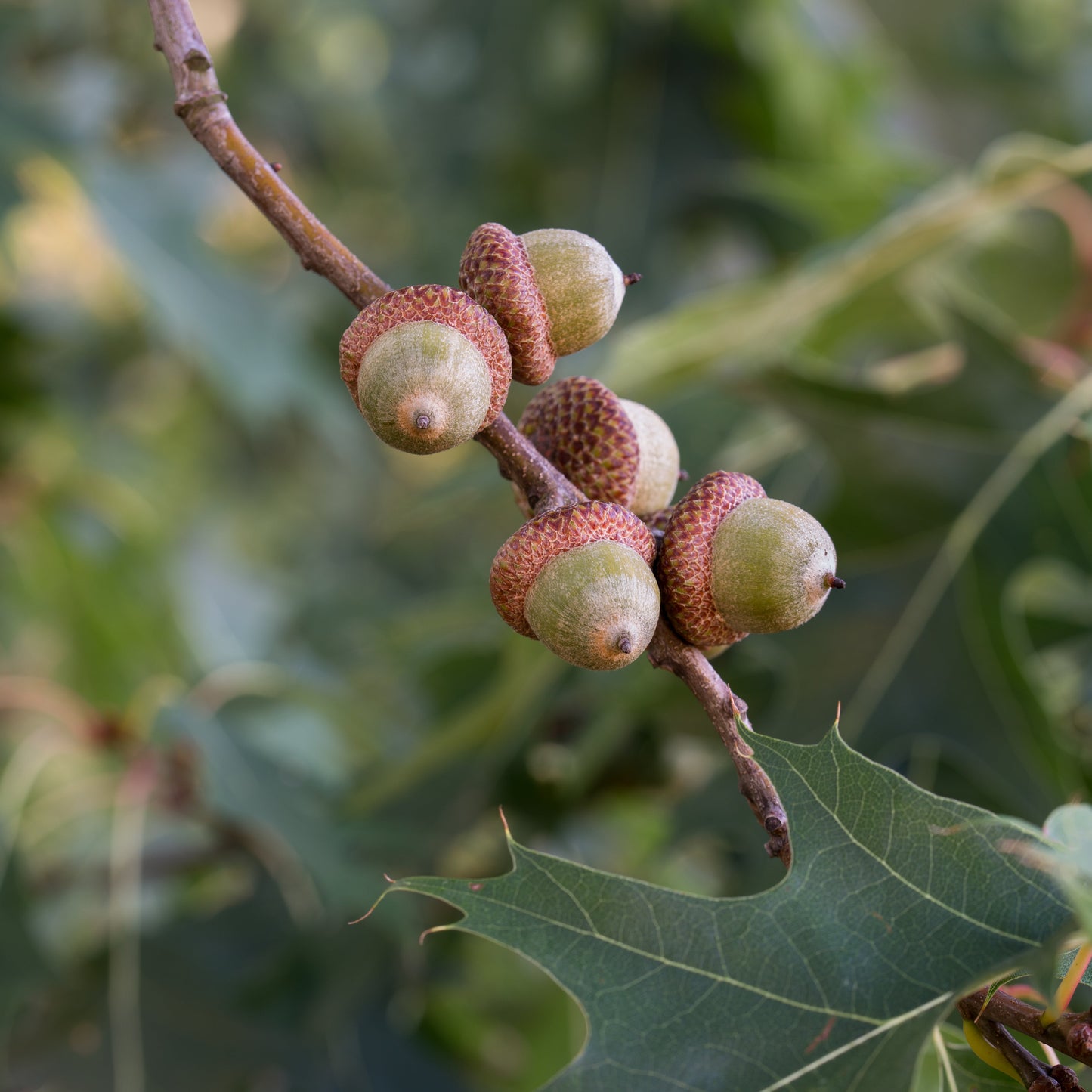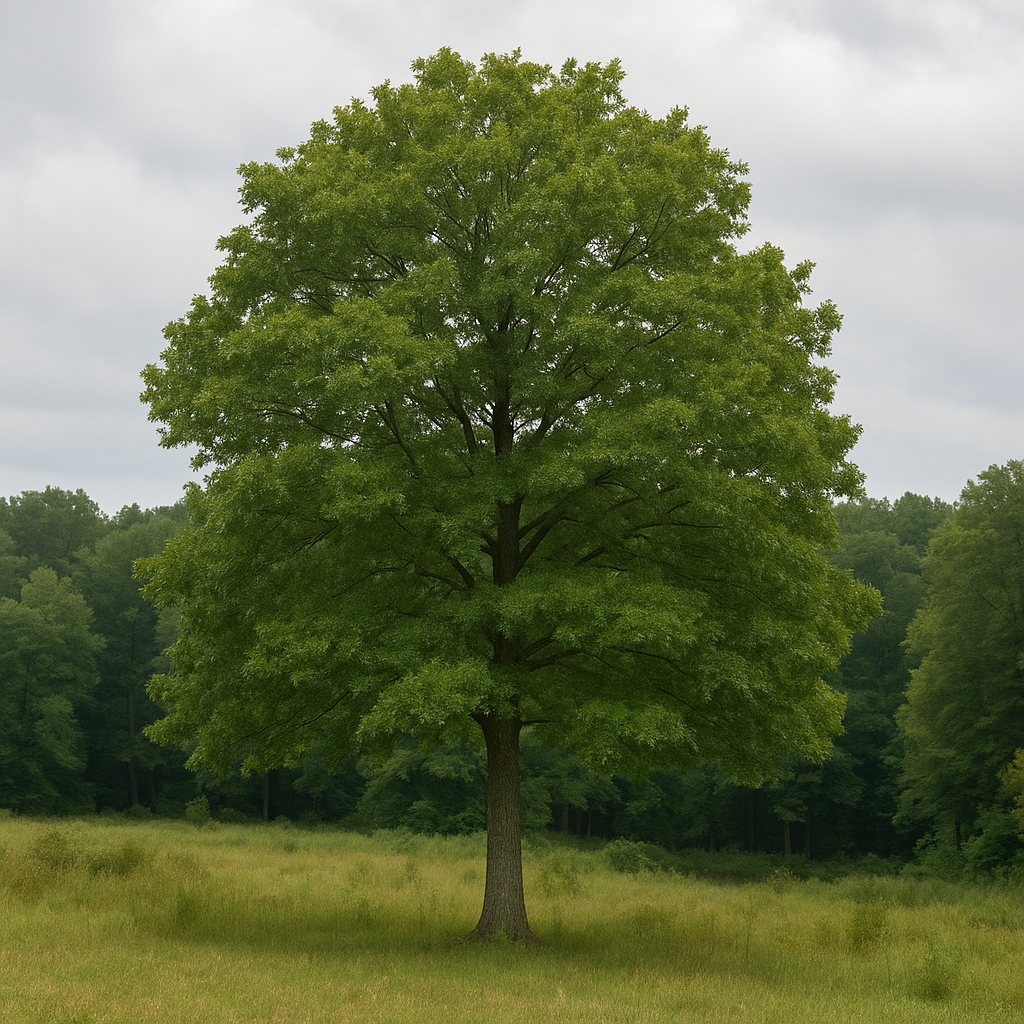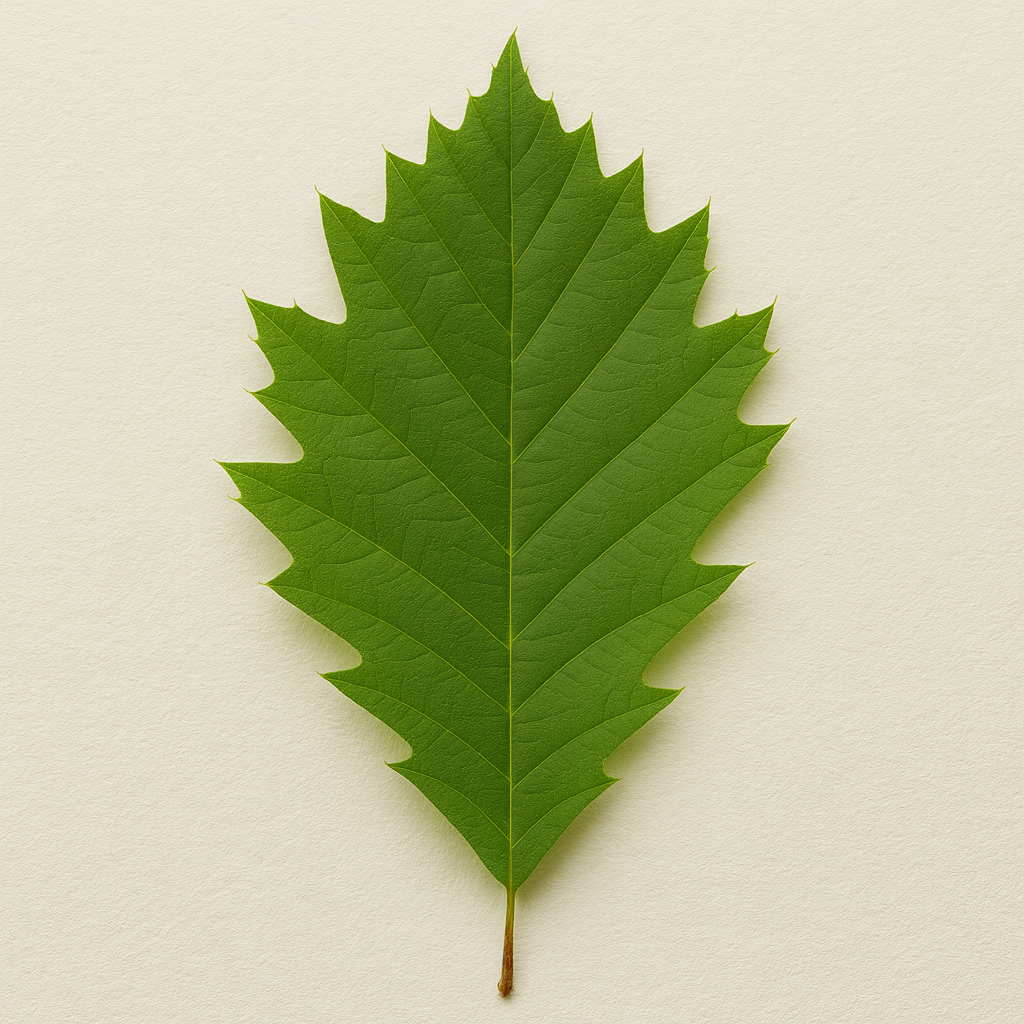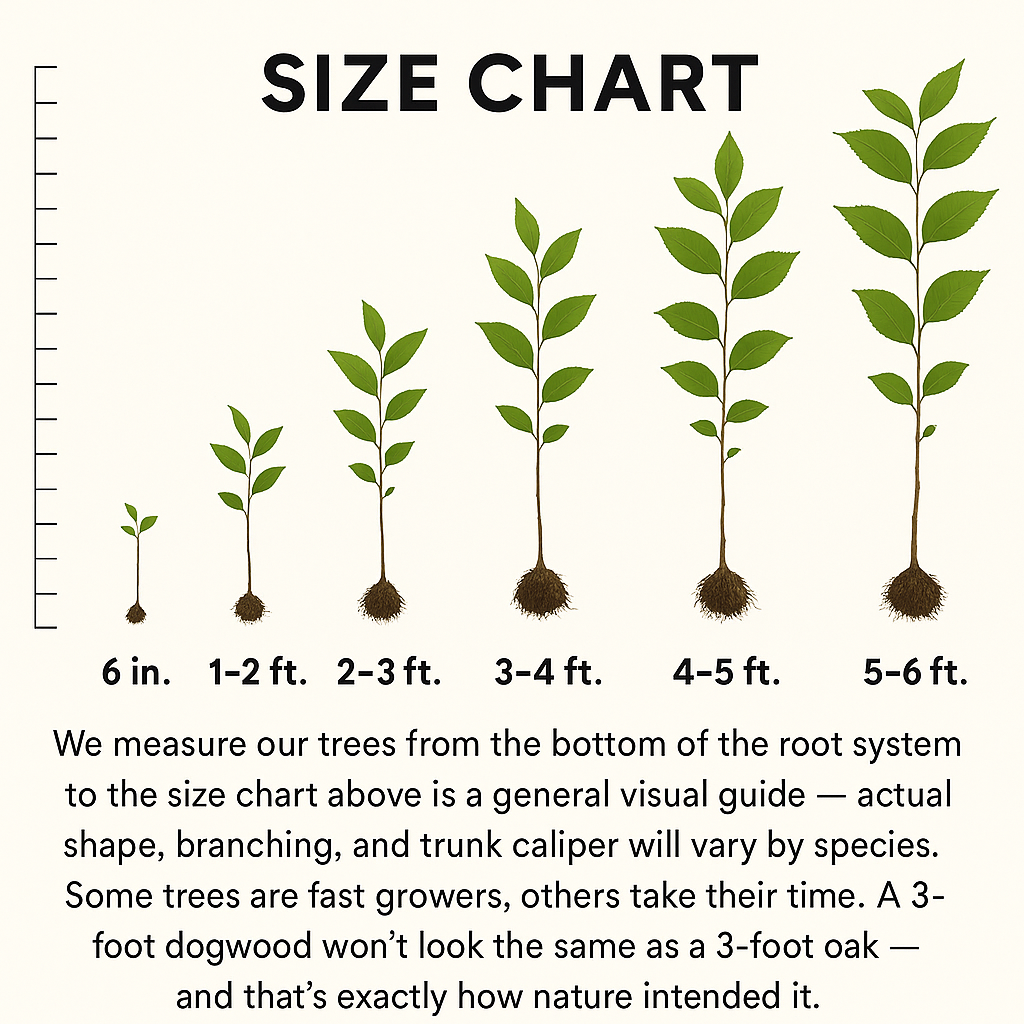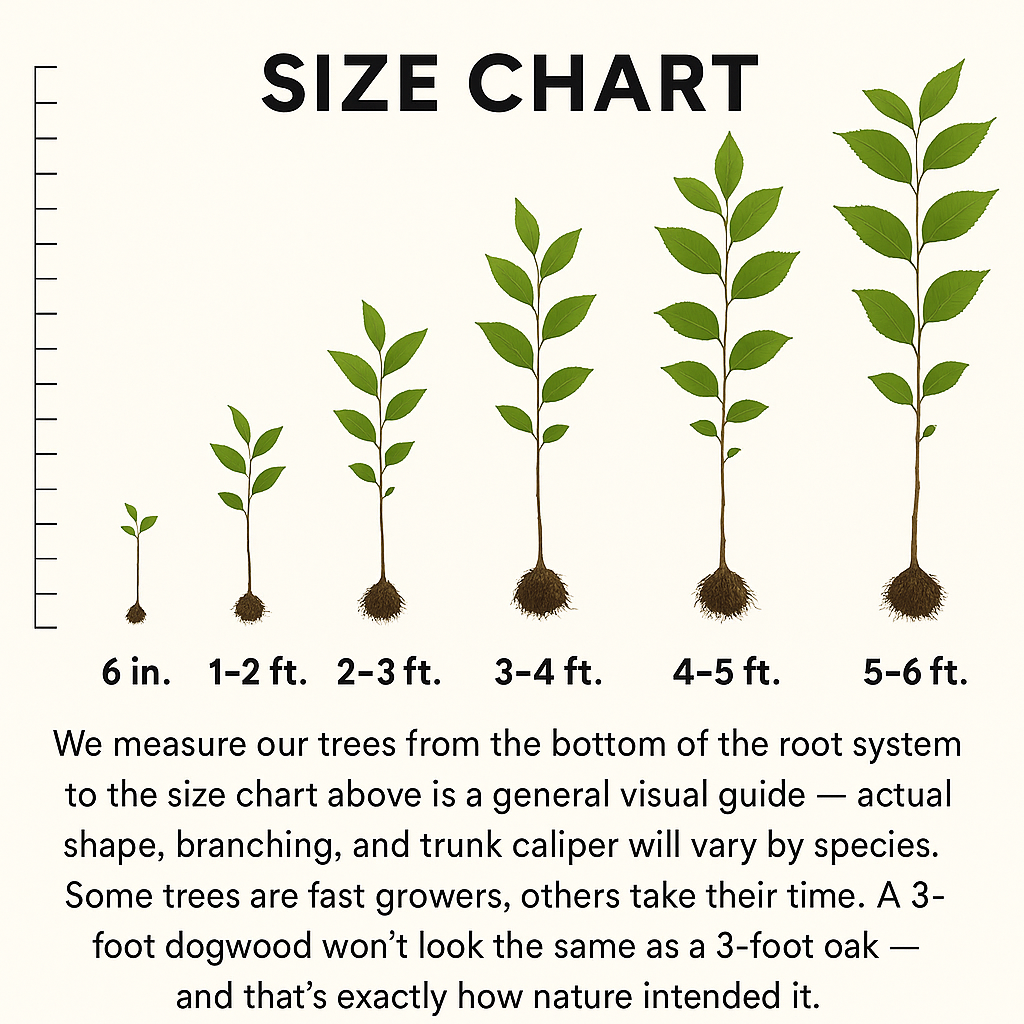Limited Quantities - Reserve Now For Fall
Chinkapin Oak Tree
Chinkapin Oak Tree
Couldn't load pickup availability
Quercus muehlenbergii
Chinkapin Oak Tree
The Chinkapin Oak is a stately, drought-tolerant native oak known for its distinctive serrated leaves, flaky gray bark, and sweet, wildlife-friendly acorns. Unlike many other oaks, its acorns are low in tannins—making them a favorite of deer, turkey, and even humans in traditional cooking.
With a broad, rounded canopy and exceptional adaptability, the Chinkapin Oak is perfect for shade, wildlife habitat, and restoration projects across a wide geographic range.
Chinkapin Oak Tree Overview
| Attribute | Details |
|---|---|
| 🌿 Botanical Name | Quercus muehlenbergii |
| 🏷️ Common Names | Chinkapin Oak, Chinquapin Oak, Yellow Chestnut Oak |
| 🌳 Mature Height | 40–70 feet |
| 🌐 Mature Width | 40–60 feet |
| 📈 Growth Rate | Moderate (12–24 inches per year) |
| ⏳ Lifespan | 100–200+ years |
| 🧊 USDA Zones | 3–9 |
| ❄️ Chill Hours | 300–500 hours |
| ☀️ Sun Preference | Full sun |
| 🧱 Soil Type | Well-drained loam, rocky, or limestone-rich soils |
| ⚖️ Soil pH | Neutral to alkaline (6.5–8.0) |
| 💧 Water Needs | Low once established; drought-tolerant |
| 🌸 Flower Color | Inconspicuous yellow-green catkins in spring |
| 🍒 Fruit Type | Small, sweet acorns; ripen in fall |
| 🐝 Pollinators | Wind-pollinated; flowers attract some insects |
| 🌿 Growth Habit | Upright with broad, rounded crown |
| ↔️ Spacing | 30–50 ft apart for canopy development |
| 🏡 Landscape Uses | Shade tree, wildlife habitat, restoration sites |
| 🧹 Maintenance Level | Low |
Environmental Benefits
🌱 Offers food and shelter to over 500 species of wildlife
🌰 Acorns provide a vital high-calorie food source in fall
🌳 Supports native caterpillars and beneficial insects
🪨 Tolerates poor, rocky, or alkaline soils; excellent for erosion control
Pros & Cons
| ✅ Pros | ⚠️ Cons |
|---|---|
| 🌰 Sweet acorns loved by deer, turkey, and songbirds | 🐿️ Acorn drop can be messy in high-traffic yards |
| 🌳 Majestic shade and excellent longevity | 🐛 May be susceptible to oak wilt or borers in some areas |
| 🌿 Thrives in tough, dry, or rocky soils | 🌳 Can outgrow small urban yards |
| 🧬 Native to wide range; extremely cold- and heat-tolerant | 🧹 Requires space for full canopy spread |
| 🌞 Full sun performer with minimal care needs | 📅 Slow to establish in first few years |
Planting & Care Guide
🛁 Soak root zone before planting to ease transplant stress
🕳️ Dig hole twice the width of the root system; plant at root flare
🌾 Mulch 2–3 inches deep around base, avoiding direct trunk contact
💦 Water weekly for first 1–2 years; reduce once roots are deep
✂️ Prune in late winter to remove dead or crossed branches
🧪 Minimal fertilization needed; compost in spring is ideal
The Chinkapin Oak is a rugged, wildlife-rich native that earns its place in any landscape with its distinctive look, tough constitution, and sweet acorns. Ideal for shade, restoration, or naturalistic plantings, it’s a long-lived investment in biodiversity, beauty, and heritage.
Share
